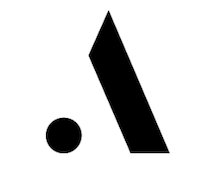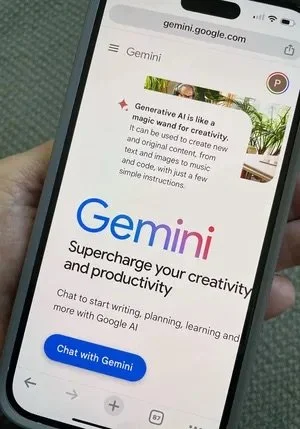From Brainstorms to Bots: Google Gemini's Role in the Future of Ads
Written by Ava Green
Image courtesy: Britannica
AI isn’t just changing advertising; it’s already changing the game for agencies create, strategize, and innovate. Monks, a digital marketing agency, is already ahead of the curve, using AI not just to optimize strategy but to push creative boundaries for their clients. While some see AI as a shortcut or even a job threat, others recognize its potential to enhance, not replace, human creativity. As universities debate the positives and negatives of generative AI in academic and professional settings, one thing is clear: AI isn’t the future of advertising; it’s already here.
Boston University is leaning toward embracing Generative AI. Still, it recognizes its pitfalls: “Headlines, however, have tended to focus on possible negatives, from students cheating by handing in AI-written papers to deep fakes that could affect political campaigns. Some are also concerned about its ability to replace humans and take away jobs; AI’s abilities have even been a major issue in the ongoing strikes by Hollywood actors and screenwriters.” Taking the initiative to harness AI now is a bold yet essential move–not to fuel our fears but to shape its future before it shapes us.
However, Monk took AI for a test-drive and proved that the technology creates detailed, consistent, and effective results. Contrary to AI’s stigma, embracing its skills as a “search funneling tool” is revolutionizing the industry. There’s no shortage of complex AI systems out there, but Monk’s has a secret weapon: the no-fuss, totally free Google Gemini. Simple? Yes. Effective? Absolutely.
Gemini was on point with its recommendations; their client achieved “an 80% improved click-through rate, 46% more engaged site visitors, and a 31% improved cost-per-purchase than other campaigns.” In addition, the agency-Gemini collab showed its efficiency by the numbers, “with 50% fewer design and production hours than typically scoped for the number and type of creative assets produced.” Gemini made this possible. But what superpowers make this AI platform so effective? Let’s dive into it.
Image courtesy: Framer
Monks asked Gemini to do a simple favor: search for various marketing and social media trends based on their client, Hatch’s wellness-based company. Why? To maximize context and strategic decisions specific to their client’s brand and goals. The platform successfully – and quickly – produced a comprehensive analysis with three target personas to focus on, but it didn’t stop there.
By leveraging its “funneled search” capabilities, Gemini painted a rich, data-driven picture of target personas with striking accuracy in a fraction of the time it would typically take. In addition to painting a picture of the ideal target demographic, Gemini went above and beyond and hypothesized the target persona’s potential psychological and behavioral traits to maximize context. A few central questions Monks posed were “What are their lifestyle aspirations? What interior design aesthetics would resonate with them and influence their shopping habits?” This – completely free – conversation revealed “overlooked audiences” and strategy for Hatch to get the ball rolling for the next step: the creative process.
Advertising is an industry that doesn’t sleep. Battling minimal time and budget, Monks ditched crunching the numbers and linked up with Gemini to use their “funneled search tool.” Monks knew that time is money and didn’t have enough of either. They found that turning the tables and partnering up with AI solved both problems while still delivering a big win for Hatch.
While Gemini has proven its seat at the table for strategy, analysis, and insights, its true potential extends far beyond that into the realm of creativity. Think of Gemini and other open AI platforms as an advanced creative partner, acting as a limitless thesaurus for your mind, filling in the gaps when inspiration runs dry. During the concepting phase, AI becomes more than just a tool; it’s a sounding board for your ideas, pushing your creativity further and helping you refine and elevate your vision.
To truly harness the power of AI, platforms like Gemini can help you test whether your creative ideas are “on brief” with your clients’ ask. We’ve all had those late nights of creative burnout, unsure if anything you are writing makes sense and no one to bounce your ideas off of. AI provides a sharp, objective perspective by analyzing your concept through the lens of their needs and deliverables. It’s not just about feedback but also about refining and articulating your ideas precisely. Essentially, AI can help you sharpen your messaging, clarify your vision, and elevate your concept to meet the brief exactly. Monks leveraged Gemin’s ImageFX feature to put their concepts into clear visuals based on their full-scale analysis – something other open AI sources do not have such as Claude and ChatGPT. Instead of going back to the drawing board for the hundredth time, these profound features are changing the game for visualizing your creative concepts in a frugal, timely manner.
Another useful tip is to use Google Gemini to overcome writer’s block or when you just can’t seem to put an idea into words. We’ve all had those moments when the perfect word is just out of reach. This is where Gemini becomes your best friend. It gives as many customized suggestions as you want to your creative brief and client’s asks. Gemini sets itself apart from the other free generative platforms by inferring concept to execution, whether it's a term you’ve never thought of, a word that’s on the tip of your tongue, or a phrase that brings your idea to life instantly.
It’s crucial to remember that you’re still in the driver’s seat, crafting the message to fit the creative brief and connect with your audience. The words were always there; Gemini just changes how and when you discover them. Monks' creative director states, “AI can allow you to go broad and also bring more focus, all at the same time, because of the power of scale.” The tech platform was sorting through tons of data and streamlining precision.
These impressive outcomes challenge the misconceptions surrounding generative AI. We need to start using AI as a tool for efficiency and enhancement in work, not as a replacement. Monk’s approach is a prime example of how to embrace, rather than shy away from, this groundbreaking technology. Now, in its early stages, it’s crucial to understand and harness its potential before it becomes something we fear losing control over.
Image courtesy: Figma



